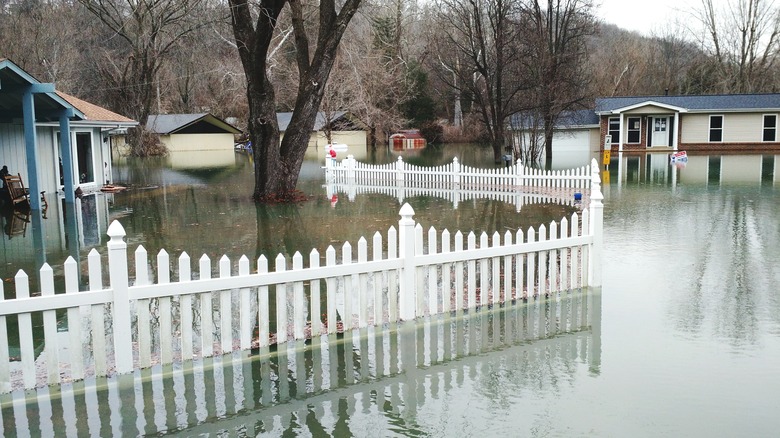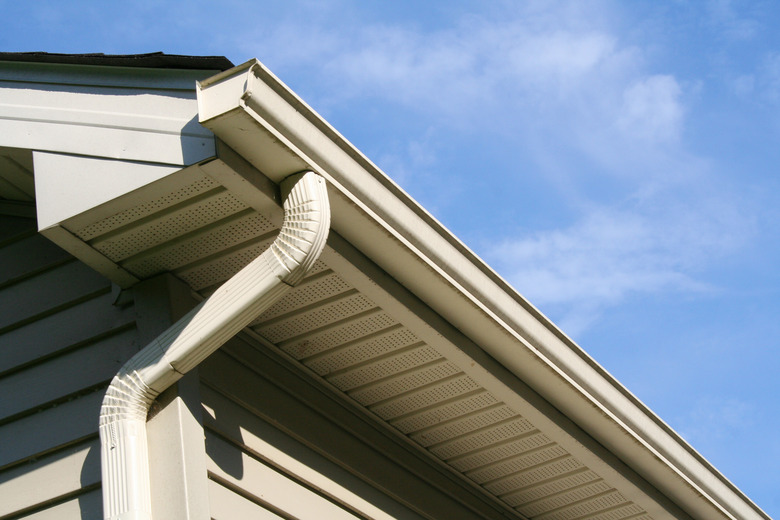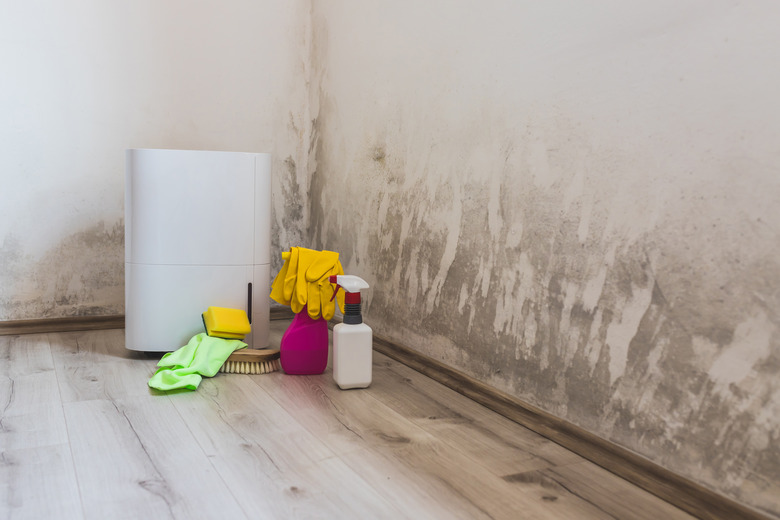What Every Homeowner Should Know About Flood Safety
Floods are the most common natural disaster faced by residents of the United States, so it is a good idea to have a working knowledge of flood safety in case of an emergency. Taking the right steps before, during and after a flood can help you keep your home and, more importantly, your family safe. Although it's especially crucial to understand some simple flood safety tips if you live in a designated flood zone, those who live outside of one can also experience occasional flooding, so make sure you understand at least the basics of flood safety.
Get Flood Insurance Now
Get Flood Insurance Now
One of the most important things you need to understand about flooding is that your homeowners insurance does not cover it. In fact, your policy likely contains a clause explicitly denying flood coverage. Check the Federal Emergency Management Agency (FEMA) flood map to determine the flood risk in your area. If you are in a moderate-risk or high-risk zone, it's wise to get flood insurance to rest assured you're covered in case something happens.
If you need coverage, buy it right now — even if it's well ahead of the rainy season. Flood insurance policies don't provide coverage for the first 30 days, so don't wait until the weather turns ugly to purchase a policy. Getting the right coverage amount is as important as timing your policy purchase correctly. It seems like a good idea, for example, to buy enough flood insurance coverage to pay off your home's mortgage. That may not be enough, however, if your home needs to be rebuilt or if it needs extensive repairs.
To get a rough idea of what you need, multiply the total square footage of your home by local building costs per square foot. Local real estate agents, insurance professionals and builders' associations can give you this information. Get at least this much coverage so you know you can rebuild your home if necessary. Consider padding the policy a bit if your home has special or historic features, is built in a unique style or contains a lot of high-end finishes.
Some Home Modifications
Some Home Modifications
In areas where floods are extremely common, builders often take these natural disasters into account when building houses. This is why you will sometimes see houses built on stilts or find appliances like water heaters somewhere other than the basement. In fact, many homes in frequently flooded areas intentionally lack basements altogether.
Unfortunately, climate change and other factors are shifting some of the nation's floodplains — and areas that used to see only rare flooding are finding themselves in much wetter climates than they were a few years ago. If you live in one of these places, consider making some modifications to your home to keep your home safe from damaging flood waters.
To start these modifications, call a plumber and ask to install backflow valves to keep floor drains from backing up into your home when the water is high. If your furnace or water heater is in the basement or on the first floor, get an estimate on the cost and feasibility of moving it to higher ground. If you can't, make sure it is anchored firmly in place and install a flood cover.
If you are doing household renovations, consider choosing water-resistant flooring and wall materials, like tile and paperless drywall. This can help minimize the damage to your home and decrease the amount of material you will need to replace after a flood. Extra-wide baseboards can also protect walls from floodwater.
Lastly, look at revamping your outdoor space as well. The more permeable ground you have around your home, the more places floodwater has to go before it reaches your house. Where feasible, forgo concrete, asphalt and other hardscaping elements in favor of mulched areas and gravel. Talk to your community leaders as well and advocate for city planning that provides more permeable space and less concrete.
Flood Safety Before the Storm
Flood Safety Before the Storm
Unfortunately, flash floods happen quickly, and you may not have time to prepare, as flood warnings don't always buy you a lot of time. If flash flooding is common in your area, stay ready by keeping an emergency kit filled with extra clothes, blankets, medications, clean water and nonperishable food items on the highest level of your home. This way, you won't find yourself stranded if you have to get to higher ground in a hurry and then wait a few days for the floodwater to recede.
If you have some warning and know that predicted storms or snow melts may cause flooding in the next few hours or days, take some additional steps to protect your home. First, place sandbags along the bottom of all your exterior doors to try and keep water out. Then, clean your gutters if you have time. Some well-made sandbags can help soak up water before it seeps under doors, but they won't stop the water in your gutters from overflowing into your basement or foundation. Cleaning your gutters will help direct water away from your house.
Next, place your valuables and important documents in a waterproof lockbox and place the box in your attic or on the highest floor of your house. Move expensive electronic equipment, such as televisions and computers, to higher ground as well. Unplug other electrical appliances and turn off the electricity to your home.
One of the most important flood safety tips is to keep your ears open for emergency alerts from the local authorities as well as the National Weather Service. If they tell you to evacuate, do so promptly and as directed. If you are short on time, prioritize protecting your important documents and turning off the electricity to your home. Always put your family's safety first. You can replace household items that you didn't have time to save.
Safety During the Flood
Safety During the Flood
If you find yourself trapped by rising floodwater before you can evacuate, get to the highest ground you possibly can. When at home or inside a building during a flood, get to the highest point you can without compromising your escape. Don't climb into an attic that offers no way out. If the water climbs too high, you could be trapped in your attic with limited oxygen. Climb onto the roof of a given structure only if you must. Take a flashlight or flare gun with you so you can signal for help once you get there.
When driving or walking during a flood, always obey traffic barriers and signs for evacuation routes. The authorities use these tools to divert traffic away from dangerous areas, so never move them or drive around them. Avoid crossing bridges over water, as a flash flood could wipe out the bridge or throw debris-filled water at you.
If you approach standing water or a flooded road, stay out of it and turn around if you can. Even slow-moving floodwater is potentially dangerous, often carrying debris and displaced animals, like snakes. Standing water may also be holding an electrical current from a downed power line. Floodwater frequently mixes with sewage and other possible contaminants as well, so avoid it whenever you can.
After the Flood
After the Flood
Most people want to get things back to normal as quickly as possible after a flood, but it is important to wait to return to flooded areas until the authorities report that it is safe to do so. When they do, proceed with caution. Flood safety is just as important during cleanup.
Pay attention when you reenter your home. If you see or smell mold, wear a respirator during cleanup and keep family members with asthma out of the house. Make sure to turn off the power to your home before handling any plugged-in electronics or appliances to avoid electric shock. Wear heavy work gloves and protective clothing when cleaning up debris.
Always keep your wits about you while you are working and be prepared to run into a few critters. Snakes and other animals sometimes get carried into houses during a flood. Others enter houses looking for shelter and safety during the storm. If there's a power outage but you need to use a shop vac, pump, dehumidifier or another tool to remove water, plug it into a gas-powered generator. Always run a generator outdoors, never indoors or in a garage.
You will want to salvage whatever you can, of course, but exercise common sense when doing so. In most instances, replacing wet drywall and wood is a must, and some upholstered furniture and carpets may harbor bacteria. Keep as much as you can but only when it is safe to do so. When everything is dry, clean your home with disinfectant to remove any remaining bacteria.
Ask for Help
Ask for Help
You are going to need a little help to get things back to normal after a major flood, so don't hesitate to reach out to resources like The American Red Cross or local organizations like churches or volunteer corps that can assist you with supplies and cleanup help. The sooner things get back to normal, the sooner you can resume living safely in your home. Remember that even if you can get into your house, mold and other bacteria can make it unsafe to stay there until the cleanup and repairs are over.
Contact your flood insurance company as soon as possible and start a claim. When you reenter your house, take lots of pictures or videos of the flood damage. Sometimes, insurance adjusters operate remotely, so you will need to have lots of documentation to back up your insurance claim. Take inventory as you remove damaged items from the home so you can give it to your insurance company or adjuster. Again, photos of the ruined items may prove helpful.
If the president of the United States declares your area a disaster after a flood, make sure you apply for help through FEMA. Flood insurance will pay for damage to your home, but it doesn't provide assistance with temporary lodging and other immediate needs. FEMA funds can help you cover the gaps left by your insurance company.
References
- Ready.gov: Floods
- FEMA National Flood Insurance Program: Rebuilding After a Flood Can Be Difficult. We're Here to Help.
- Universal Property: 10 Flood Safety Tips for How to Prepare and Make It Through
- PropLogix: 5 Things Every Homeowner Should Know Before The Next Natural Disaster
- Natural Resources Defense Council: 7 Ways to Flood-Proof Your House
- Dry Effect Restoration Services: What Homeowners Should Know to Save the House from Flood Damage?
- Nationwide: Flood Safety Tips: What to do Before, During and After a Flood


